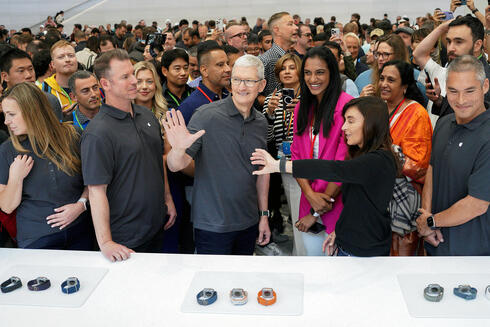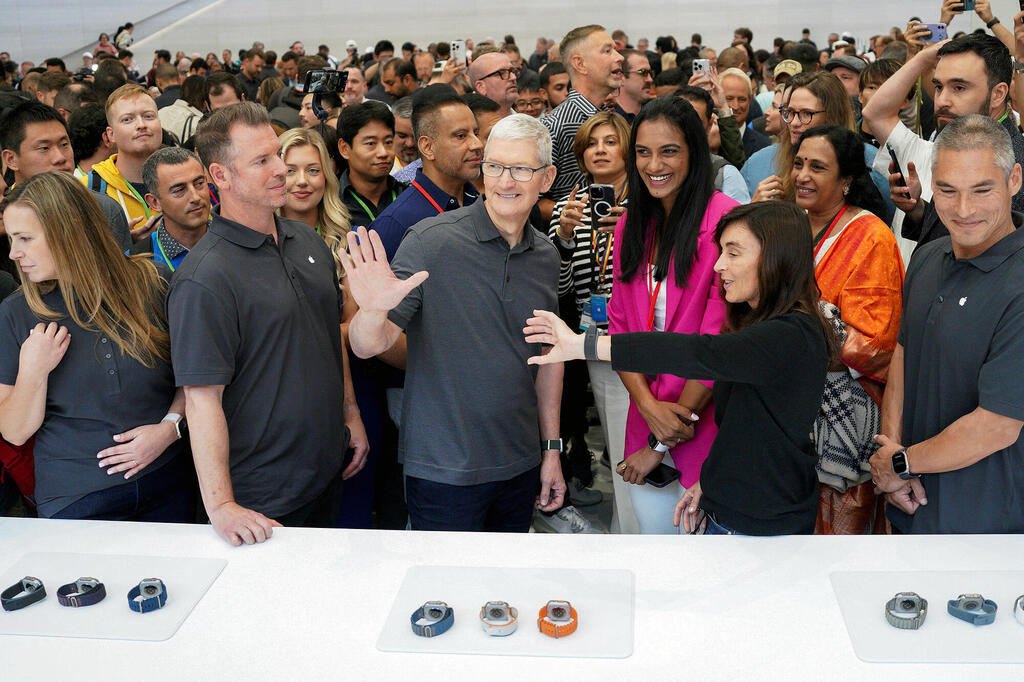
Analysis
Green Apple: How Apple turned the Watch into a product with zero emissions
The new Apple Watch model launched last week boasts zero carbon emissions throughout its entire life cycle, from the raw materials it is made of to charging at the customer's home. But you can't help but wonder if it’s simply a marketing gimmick to manipulate consumers to buy more unnecessary and polluting products
The new Apple Watch models unveiled last week combine a selection of new capabilities and upgrades. A more powerful processor, quick activation of Siri without an Internet connection, and even new control gestures by connecting your thumb to your index finger. But one significant innovation, which is connected to Apple's central strategic vision, is not found in the watch itself but in its production and transportation processes - because the Apple Watch is the first Apple product whose carbon emissions are completely zero throughout its life cycle, and theoretically produces no new carbon emissions. In doing so, it outlines a path for the rest of Apple's products to also reach this goal by the end of the decade.
In order to zero out the emissions of the smart watches, Apple followed the approach of reducing emissions in the manufacturing and shipping processes of the watches, and then offsetting emissions through investment in environmental projects. It focused on three key aspects of the product: materials, electricity and transportation.
The watch was designed from the ground up so that it would be possible to use recycled materials in its production, and the watch incorporates about 12 recycled materials, chief among them aluminum that makes up its frame. According to Apple, all the aluminum in the watch comes from surpluses from iPhone production. The magnet and the tungsten material in the device are also recycled, and for the first time all the cobalt too - an essential metal in modern batteries and whose mining is often accompanied by environmental and humanitarian harm.
The fabric bands of the Apple Watch are made from 82% recycled fabric, and the rubber bands are made from old rubber bands that have been shredded and reshaped. Some of the recycled materials come from iPhones, iPads and other old Apple devices that customers have returned to the company as part of trade-in promotions, although Apple admits that the scope of this source is relatively small and that the company needs to do more to incorporate recycled materials.
On the electricity side, the entire production procedure of the Apple Watch is driven by 100% clean energy. According to Apple, the goal was achieved after years of investment, especially with regard to working with the company's suppliers and manufacturers. Apple says that 300 suppliers, who represent 90% of the company's direct spending, are obligated to use 100% clean energy in the production process.
Reaching the goal was a complex procedure, also a regulatory one, since many countries in Asia where the company's suppliers operate did not allow businesses to directly purchase clean energy, and Apple worked with the governments to change this policy.
Apple identified that the manufacturing phase is responsible for 74% of the watch's energy consumption. The remaining percentages are the result of the electricity needed for charging and most electricity grids use fossil fuels.
To deal with this, Apple has estimated the amount of electricity that will be used to charge each Apple Watch over its lifetime, and will offset it by buying clean energy on a significant scale. In addition, the new models will include a component that will show users when the electricity their devices consume comes from clean, sustainable energy sources, thus giving them an indication of when it is good to charge the electric vehicle, the Apple Watch, the iPhone, etc., or to operate energy-intensive products such as a washing machine. The component called Grid Forecast will be launched first in the U.S. and later in other countries.
The last element in which Apple focused on in reducing carbon emissions is the shipment of the watch. It is a relatively minor component, 3-6% of the total emissions in the life cycle of the device, but such that there is a simple way to reduce it: reducing shipments by airplanes in favor of shipping by sea, which reduces the scope of emissions by 96%.
In addition, the Apple Watch packaging was designed to be a fifth smaller than the previous packaging, which, according to the company, makes it possible to send 25% more watches in the same volume, thus reducing emissions even in air shipping. At the same time, Apple is investing in the development of sustainable aviation fuels with the aim of enabling emissions to be eliminated in air shipments as well.
These moves allowed Apple to reduce Apple Watch emissions by 78% compared to the company's baseline, according to which no efforts are made to reduce emissions. The remaining 22%, 8.1 kg of carbon emissions per watch, is equivalent to the amount of emissions obtained in the production process of a normal T-shirt. And to zero out the remaining emissions, Apple purchases carbon credits that are invested in solutions designed to permanently absorb carbon, through planting trees and restoring ecological systems such as prairies, swamps or forest areas.
Offset solutions of this type have received quite a bit of criticism from climate activists and scientists, who say that they allow huge corporations to continue polluting while paying a "green tax" that allows them to clear their conscience. All this, while there is no sufficient certainty that carbon offsets actually offset the emissions produced by the company, and when certain projects were previously accused of double offsets. Apple partially addressed this criticism, saying they only invest in well-managed programs to avoid double counting, and only in long-term projects designed to remove carbon from the atmosphere.
The combination of these moves allowed Apple to announce the new Apple Watch models as the company's first product to boast zero carbon emissions throughout its entire life cycle. And even if the road there is not perfect and there is still room for improvement, this is an impressive achievement that paves the way for eliminating emissions in other company products and further reducing emissions in the Apple Watch. It also outlines a path and exerts pressure on other manufacturers, who will have a harder time justifying why their products are not zero emitters, or at least on the fast track there.
However, these efforts by Apple still suffer from one major failure: they have difficulty dealing with one of the main causes of carbon emissions from technology products - the consumer culture that involves the constant upgrading of devices, and the pursuit of new and desirable products that in practice present only a minor improvement compared to the generation that preceded them.
The latest Apple Watch models are an example of this: the improvements compared to the previous generation are small to nonexistent. Still, Apple fuels the feeling that those who don't buy the latest model will be left behind. This time it also adds a conscientious greenness in the form of a promise that the product has zero emissions. But the reality is that the Apple Watch with the lowest emissions is the one consumers already have on their wrists right now, and any purchase of a new model will involve some environmental damage, no matter what the company promises.
Apple explains that they do not want to limit customers who want a newer product. At the same time, they note the high durability of the products, and their trade-in promotions, but admit that two-thirds of Apple Watch buyers are new customers.
One move that would significantly reduce the company's carbon emissions—not launching a new model every year—is not being talked about at Apple. This would already require too great a financial sacrifice, and capitalism has its limits.















